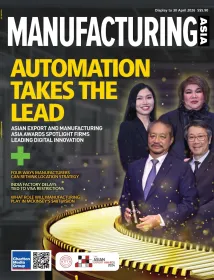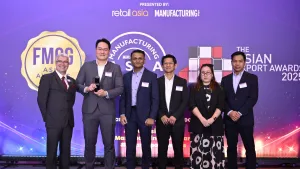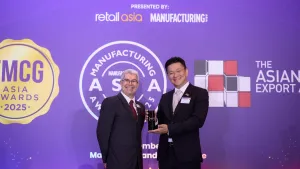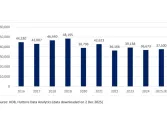
South Korean Factories return to contraction as tariffs bite
Manufacturing sector deteriorates for 8th time in 9 months amidst domestic weakness and US trade barriers.
South Korea's manufacturing sector slipped back into contraction in October after a brief reprieve, as US tariffs and domestic economic weakness combined to drag down production and orders at the start of the final quarter.
The S&P Global South Korea Manufacturing Purchasing Managers' Index fell to 49.4 in October from 50.7 in September, dropping below the crucial 50.0 threshold that separates growth from contraction. The reading marked deterioration in factory activity for eight of the past nine months in Asia's fourth-largest economy.
Output, new orders and employment all returned to contraction territory during the month, reversing the modest gains recorded in September and highlighting the fragile state of the sector.
New order intakes fell at a moderate pace in October, with manufacturers attributing the decline to a subdued domestic economy and tariffs imposed on export goods, particularly those sold to the United States. However, the reduction in new export sales was only fractional and softer than that seen for total new orders.
Usamah Bhatti, economist at S&P Global Market Intelligence, said the positive signals observed at the end of the third quarter "largely evaporated in October."
"Manufacturers noted that tariffs further impacted the sector, as new export orders fell into decline again, particularly emphasising the decrease in US export demand," he added.
Production volumes declined only marginally during the month, but it marked the seventh decrease in the last eight months. Firms attributed lower output to reduced new order inflows, particularly from the domestic market. In some cases, factories opted to utilise existing inventories of finished items to help meet order requirements, resulting in a modest depletion of stock holdings.
Employment levels fell for the first time in three months during October, albeit fractionally. The rate of job shedding was often linked to the non-replacement of voluntary leavers rather than active redundancies.
Evidence of spare capacity persisted across the sector. Backlogs of work decreased to the largest degree since June, as firms redirected capacity to complete existing work amid subdued demand conditions.
October data indicated a sharp increase in input costs, driven by higher raw material prices. Firms noted that a weak exchange rate and tariffs had placed additional price pressures on inputs sourced from abroad. Despite easing to a four-month low, the rate of input price inflation remained above the series average.
Mr Bhatti observed that "inflationary pressures remained historically elevated, with raw material prices from abroad often rising due to unfavourable exchange rate fluctuations."
As a result, output charges were raised for the eleventh consecutive month, though at the softest rate in three months, with firms citing the need to pass through higher cost burdens to customers.
In line with trends in output and new orders, purchasing activity fell in October, as production requirements were subdued and higher prices weighed on input buying decisions.
However, there was evidence that manufacturers sought to purchase and store materials in advance to guard against further price increases and potential supply disruptions. Shipping delays also influenced supplier performance, contributing to the most pronounced lengthening of average lead times since July.
Confidence in the year-ahead outlook remained positive among South Korean manufacturing firms at the start of the fourth quarter, though the degree of optimism picked up only slightly from September and remained below the series average.
Positive sentiment was linked to the mass production of newly launched products, though concerns were raised regarding the health of the domestic economy and the long-term impacts of tariffs.
Mr Bhatti said the outlook appeared mixed. "On one hand, firms reported a renewed decline in employment alongside a modest fall in the level of outstanding business. On the other hand, confidence regarding the upcoming year strengthened slightly amid hopes of a boost from the mass production of new products."
He added that "concerns about the prolonged impact of domestic weakness and tariff-related disruptions persist," suggesting manufacturers face an uncertain path ahead as they navigate the dual challenges of weak home demand and ongoing trade tensions.















